 Hello, gentle readers, and welcome to the last regular RPG Reload, the weekly feature where we gave it our all against insurmountable odds. Each week, we took a look at an RPG from the App Store’s past to see how it held up in the here and now. It was a chance to revisit old favorites, reflect on their place in the overall library, or simply to take a deeper dive than our reviews typically allowed for. It’s been my pleasure to serve as the tank in this little party of ours, and although the RPG Reload as we know it is changing, we will probably do more Files in the future now and then. As such, if you have any suggestions for games you’d like to see, please leave them in the comments below, the Official RPG Reload Club thread, or on Twitter at @RPGReload. They’ll be added to the pool that will be drawn from at such times when the Reload Files return.
Hello, gentle readers, and welcome to the last regular RPG Reload, the weekly feature where we gave it our all against insurmountable odds. Each week, we took a look at an RPG from the App Store’s past to see how it held up in the here and now. It was a chance to revisit old favorites, reflect on their place in the overall library, or simply to take a deeper dive than our reviews typically allowed for. It’s been my pleasure to serve as the tank in this little party of ours, and although the RPG Reload as we know it is changing, we will probably do more Files in the future now and then. As such, if you have any suggestions for games you’d like to see, please leave them in the comments below, the Official RPG Reload Club thread, or on Twitter at @RPGReload. They’ll be added to the pool that will be drawn from at such times when the Reload Files return.
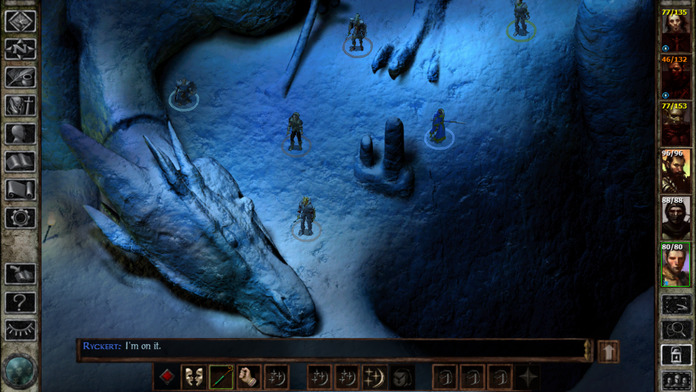
When we started this silly experiment almost two and a half years ago, nobody, not even me, knew how long it would last. I mostly just wanted an excuse to write about some RPGs that had released before my time at TouchArcade. Eli and Jared were immensely supportive of the idea right from the start, and I’m sure if I wanted to keep doing these until we hit four digits, they’d let me. But let’s face it: even with a ton of great or interesting RPGs on iOS, 100 columns down the road, it’s getting hard to find games in the genre that are old enough, still around, and worth writing about. We’ve built a great sub-community with these columns, and I’m now more interested in seeing that community come together and have fun, which is why we’re shifting focus in the new year. The monthly Classic Reloads will ensure that you still get your semi-regular dose of deep-diving, and even without the Files, there will still be plenty of RPG talk to be had each week.
We opened the RPG Reload File series with Square Enix’s Chaos Rings, a JRPG developed and published by experienced veterans in that sub-genre. It’s perhaps fitting that we’re going to end things off with Icewind Dale ($9.99), a WRPG developed and published by experienced veterans from the Western side of RPGs. Of course, unlike Chaos Rings, Icewind Dale is a port, and it’s also an incredibly difficult, relatively long game. It’s one of those games that is poorly-suited to playing on a phone, but just about perfect for curling up with your tablet with. Although it’s family to Baldur’s Gate ($9.99), it’s a very different experience, and its icy theme makes it a good match for the winter season.
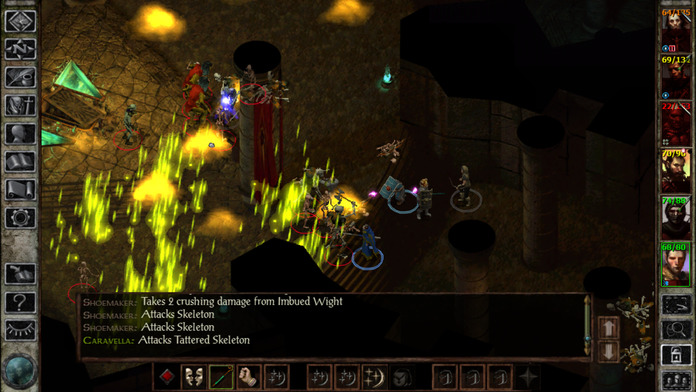
Interplay Entertainment technically still exists, I think. They’re little more than a shell without much of anything but a name these days, as far as I know, having divested themselves of much of their IP in a fire sale a few months back. It’s a sad fate for what was once one of the major PC RPG publishers in the business, and an integral part of the genre’s development. It’s also not a rare one, unfortunately. I don’t think a single one of the early PC big guns in the genre is still around in any meaningful form. I suppose the main difference between Interplay and companies like Origin Systems, SSI, Sir-Tech, and New World Computing is that there was never a big buy-out, never a particular moment where it all went pear-shaped. No, Interplay has instead withered away slowly over the years, selling itself off piece by piece in an effort to stave off the inevitable.
By the time Icewind Dale entered development, Interplay was already well and truly in the muck. The company had narrowly avoided bankruptcy in 1998, a situation largely brought on by an ill-advised venture into sports games and a narrow focus on PC at a time when PC game sales were declining sharply. They had been throwing a lot at the wall, and to be fair, a few things were sticking, but most of it slid right down instead. There were two major bright points for the company in recent years, in particular. The spiritual successor to Wasteland, Fallout, had received critical acclaim and better-than-expected sales. In response, Interplay formed a new internal studio made up of many of the members of the Fallout team. Their name was Black Isle Studios, and their output would go on to be some of the few bright spots in the years ahead.
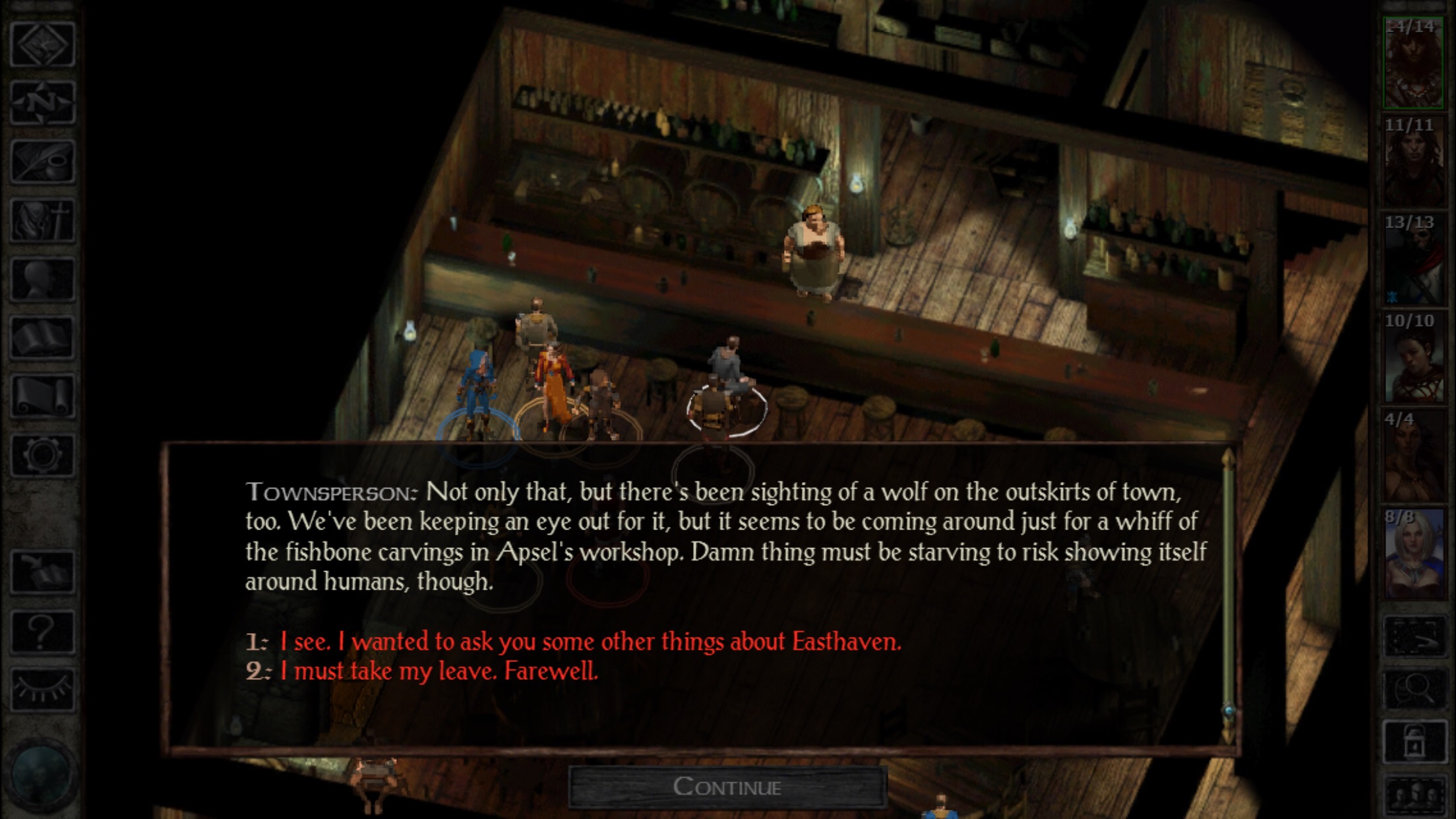
The other big success, both critically and commercially, had been Baldur’s Gate, a Forgotten Realms-based adventure from Canadian developer Bioware. Its take on the well-worn CRPG genre had thrilled and delighted many players, and if anything looked like it could pull Interplay’s fat out of the fire, this was it. Interplay had Bioware hard at work on a sequel, but it was going to take some time. In order to fill the gap, Interplay had Black Isle use the engine from Baldur’s Gate to craft their own Dungeons & Dragons adventures. Their first release using the Infinity Engine was in 1999. Planescape: Torment leaned heavily on the engine’s capabilities for telling a branching narrative, and although its sales weren’t stellar at the time, the game would become a legend in its own right over the years.
Those looking for more of the same out of Black Isle’s next game would be in for a surprise. Icewind Dale, which had the bad fortune to release on June 29, 2000, was almost as far in the opposite direction from Planescape as a game using the same engine could be. Its story was threadbare compared to its Infinity Engine siblings. There were no interesting moral choices to be made, no real philosophy to ponder, and no characters to recruit. This was no fantasy road trip across a countryside or a multi-faceted hellscape. No, Icewind Dale opted to do something that no other Infinity Engine game would: it focused on combat above all else. In a lot of ways, it is the most authentic Dungeons & Dragons experience of all of the Infinity Engine games. You have to make your characters and infuse them with personalities, because the game isn’t going to bother doing it for you.
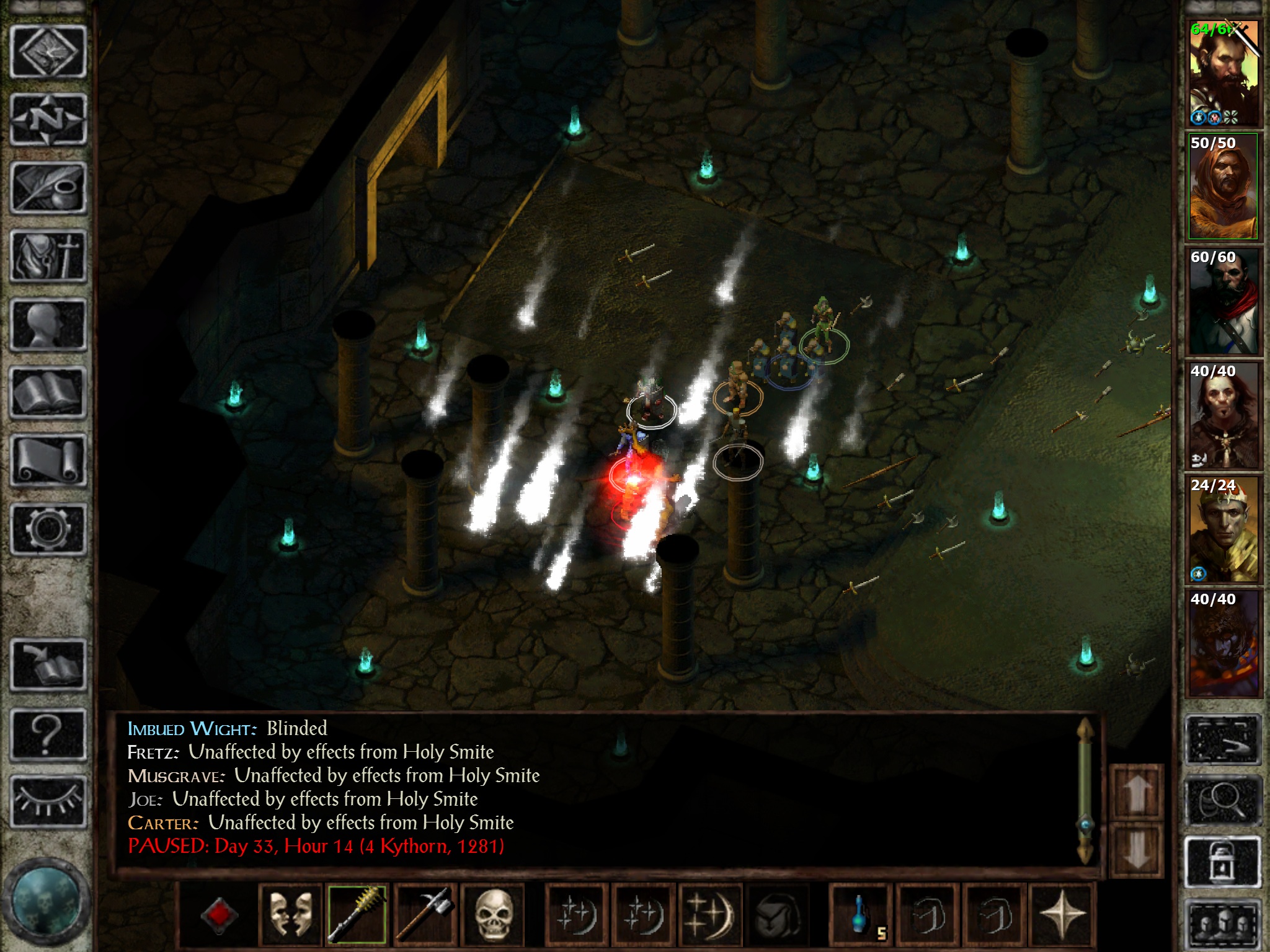
I love these little pockets of history where different developers and team leads were using similar rules and engines to make different games. It nicely reflects the fact that what kind of RPG experience you have will largely be defined by the dungeon master. Some DMs love to tell a story with rich characters and tricky traps or puzzles. Some DMs, however, are the more bloodthirsty sort. They throw you into hellish dungeon after dungeon, chucking the entire Monstrous Compendium at you and then some. They almost seem like they’re trying to kill your whole party. Maybe they are. But those kinds of DMs can be a lot of fun, if only because they tend to demonstrate the complexity of D&D‘s combat system. It’s worth remembering that D&D originally grew out of tabletop war gaming, and though many players and DMs like to simplify the rules to make it less of a headache for everyone, those who embrace the rules will find they offer incredibly deep strategy.
Unfortunately, June 29, 2000 was probably the worst possible day to release a combat-heavy dungeon crawler. You see, that was also the day that Diablo 2 came out. I genuinely believe Icewind Dale could have been considerably bigger than it was if it weren’t for that fact. By the time the dust settled on Diablo 2, Baldur’s Gate 2 ($9.99) was right around the corner. Somehow, though, Icewind Dale managed to eke out enough sales to get approved for expansions and a sequel. The expansions did alright for themselves, particularly since one of them was free. The sequel had a lot of problems getting to market, and by the time it did in 2002, there wasn’t much call for games using the Infinity Engine anymore. There were always rumors of another Icewind Dale, but I think it’s safe to say that it doesn’t have a great chance of happening anymore. The remnants of Black Isle, now at Obsidian Entertainment, have their own non-D&D stuff going on. The torch-bearers of the Infinity Engine, Beamdog, are understandably more interested in keeping Baldur’s Gate going. But hey, at least we got Icewind Dale: Enhanced Edition.

Initially released on October 30, 2014 for home computers before making its way to mobile the following week, Icewind Dale: Enhanced Edition is a more extensive remake than it appears to be for the end user. Although the original game’s assets were used, the game and its expansions were reprogrammed using Baldur’s Gate 2: Enhanced Edition as a base. The developers added 60 items from Baldur’s Gate as well as 30 class/kit combinations. The blackguard class was also brought over. To address complaints about the game’s relatively high difficulty level, a new easier setting was added. Some cut quests were finished and restored to the game. Naturally, it’s all done up with the new renderer and UI that Beamdog and Overhaul used on previous Enhanced Editions. The added kits can be exploited to mess with the balance of the game, but I’m not sure if that’s a problem or another feature. Otherwise, this is pretty much the same experience as the original.
Now, whether or not that’s a good thing is down to the individual player’s tastes. Icewind Dale is unapologetically old school in its design. While it’s easy to spot the skeleton of Bioware’s later games in their Baldur’s Gate line, there’s no such life preserver here. Black Isle clearly wanted to make something unique from the other Infinity Engine games. As such, you’ll have to create your whole party at the start. No further characters or NPCs will be joining on the way. There are no fancy tutorials, and although the game is quite linear in its progression, there isn’t much in the way of hand-holding, either. Things can go awry at a moment’s notice, and in true classic RPG fashion, you’ll likely be better off reloading from your last save if they do. More often than not, you’ll be resting between every battle, hoping no monsters interrupt your slumber while your mages re-memorize their spells.

It’s also got the weakest story by far of any of the Infinity Engine games. There’s a plot, and it has a twist or two, but the fact that your characters are essentially blank slates means that you often feel incidental to that plot rather than part of it. On the other hand, the world and environment design in Icewind Dale is incredible. This is a region that receives relatively little play in video game adaptations of Forgotten Realms, and that’s a shame. You can practically feel the cold through the screen. The dark, wintry atmosphere lends the whole thing a dangerous, foreboding feeling that none of the other Infinity Engine games can match. Every time you leave the main town to go out on a journey, there’s a very real feeling that something sinister could happen out there. Odds are, something will.
Essentially, it’s what you would get if you mashed together an old Wizardry-style game with the Infinity Engine. That could have gone horribly, horribly wrong, but as long as you know what you’re getting into, it’s a blast. It’s a fine demonstration of just how versatile that little engine was, and how well it was able to adapt a rigidly turn-based set of rules into sort of real-time gameplay while maintaining a high level of strategy. Icewind Dale was one of the last outings for the 2nd Edition AD&D rules, with the sequel to the game adopting the then-recently introduced 3rd Edition rules instead. I’m not going to say it was the best example of those rules or the ultimate game to see them off with, but you know, it did an admirable job. Unfortunately, if you’re not familiar with 2nd Edition rules, I imagine trying to understand the game’s logic today is akin to a teenager trying to use DOS prompt in 2016. There is sense in it. Also, you are going to miss a lot. That’s how it works.
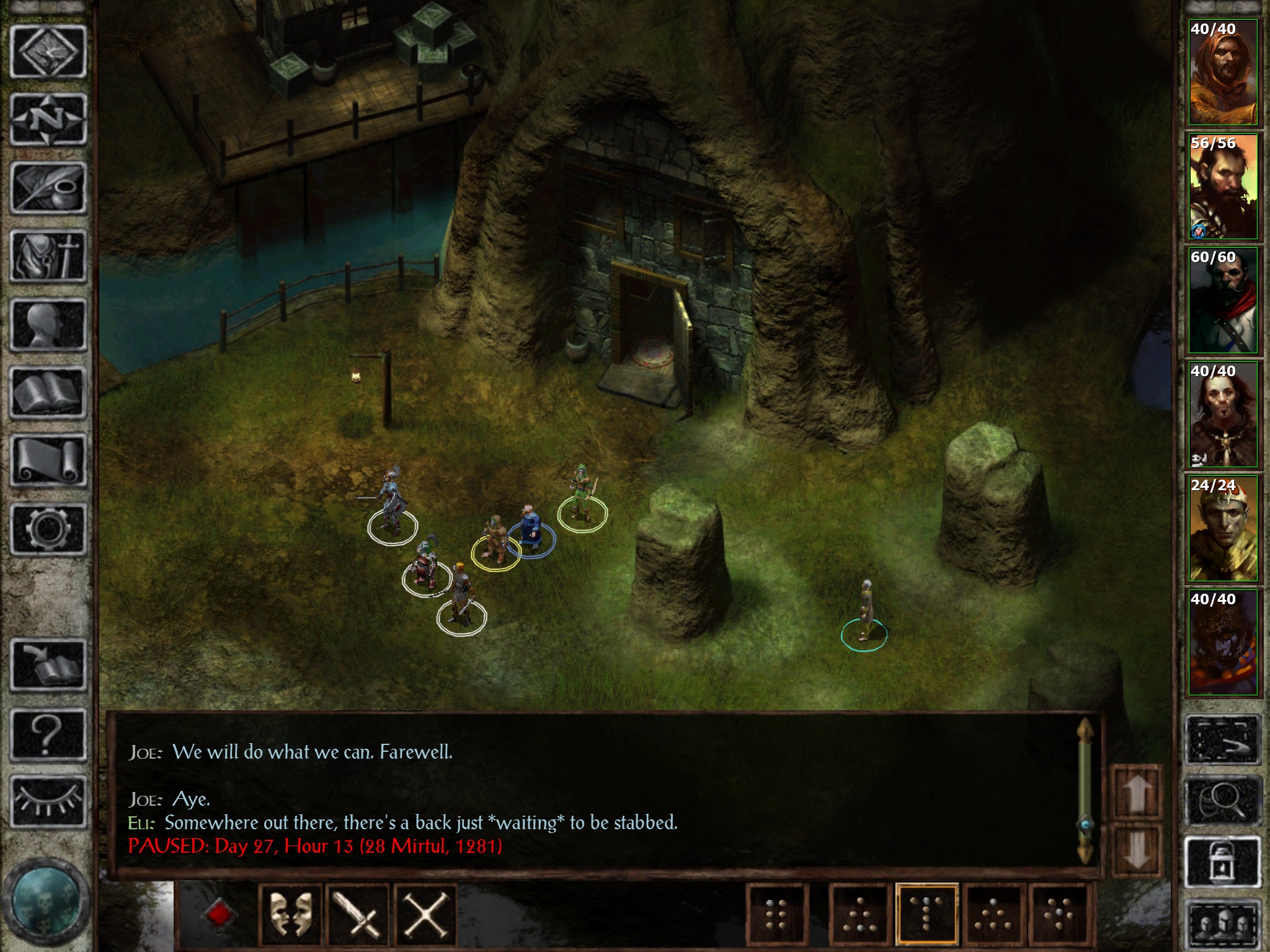
The expansion, Heart of Winter, offers a bit more story to chew on. It also raises the level cap, introduces a few new areas and monsters, and includes more puzzles. It’s relatively short, adding maybe fifteen or so hours to the game at most, but it’s pretty fun. The Enhanced Edition also includes the second expansion, Trials of the Luremaster, which was made free back in the day in response to criticisms about the length of Heart of Winter. It’s essentially just a mega-dungeon that you have to fight and puzzle your way out of, but it’s a nice cap to the festivities. Taken as part of the overall game rather than as a separate full-priced expansion, it’s easier to enjoy Heart of Winter for what it offers, as opposed to what it’s missing.
With all the new kits in this version and the fact that you create your full party, Icewind Dale is a really enjoyable game to replay. You can always find new combinations to try out and new ways to challenge yourself. I’m not sure if I would play this every year or anything quite so frequent as that, but I had a really great time going through it yet again for this column. If anything, it’s probably better on a replay because you know what to expect and can plan accordingly. The only downer is that the app was having some flickering issues on my iPad, so I had to play it on my iPhone. Even with all of the zoom and text options, that’s not an ideal way to play one of these games. The UI is a bit too busy and full of tiny buttons on smaller screens, and it’s clear the thing was designed around tablet-sized displays.
I’m not sure if the problem will persist on newer iPads or if it’s just my demon-possessed tablet acting up again, though. I hope it’s the latter, because updating these iOS versions seems to be pretty low priority for Overhaul and Beamdog. The only update the game has received came about four months after its launch, in March of 2015. I mean, as long as the flickering doesn’t hit you, the game plays just fine. There are some bugs, but this is an Infinity Engine game, so you’ll likely never get away from having a certain amount of that. I trust that Beamdog will take care of these games as long as they’re around, at least. It’s more a matter of when, not if. And perhaps one day, we might even see the sequel. There are some technical challenges involved with that, but hey, anything’s possible.
That’s just my take on Icewind Dale, though. What do you all think? You can let me know by posting in the comments below, dropping by the Official RPG Reload Club thread, or by tweeting me at @RPGReload. I guess that’s that. Next week, we’ll have a Christmas special of some kind, followed by the year-end Golden Pancho awards. As for me, I’m going to take a little RPG break while I prepare for next year’s exciting RPG Reload relaunch. Thanks for reading!
Next Week’s Reload: The RPG Reload 2016 Christmas Special